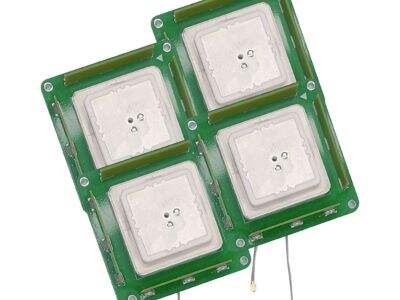I wonder if you have ever thought about how your computer or phone works? It’s really interesting. Within these devices, tiny boards keep them running smoothly. These boards are known as Printed Circuit Boards or PCBs in short. “Both are made from graphite — like the stuff that goes in pencils — and their primary function is to link all the electronic elements in various devices. There is also a newer type of board called Flexible Printed Circuits, or FPCs. This is very important because FPCs are flexible and can be inserted even in cramped spaces that normal boards cannot.
Why PCBs & FPCs Matter
PCBs and FPCs play a vital role in enabling electronic devices to operate effectively and efficiently. A WiFi Antenna PCB looks like a small green board with a lot of small lines, holes, and metal pieces on it. These components are important because they contain various electronic components, such as resistors and capacitors. These pieces enable devices to manage sound, light, power, etc. Many of the devices we use regularly (such as phones, cameras, and even cars) wouldn't operate correctly without the aid of PCBs and FPCs. Just imagine what life would be like, if we tried to operate a phone without these tiny boards inside look at its life would be completely opposite.
How Are They Different?
While PCBs and FPCs appear similar, they boast some distinct differences between the two. Wifi pcb antenna are typically rigid and cannot be bent or twisted. This means they are good for electronic devices that require a powerful and solid foundation to function properly, such as video game consoles or computers. These components act as a solid framework for a tight fit for all the electronic components. FPCs are flexible and bendable, on the other hand, allowing these wiring methods to fit into tight spaces. This is especially useful for things like a phone or a camera, where storage space is limited, and every bit matters. Due to its flexibility, FPCs are ideal for fitting into odd shapes and confined spaces.
What Is New in Together PCB and FPC Technology
As such, technology keeps advancing, and with it, PCBs and FPCs are evolving as well. The latest developments in 2.4 ghz pcb antenna technology include a little something called HDI or High Density Interconnect. This enables very small, very compact boards — it's absolutely a game changer because now there is potential for even smaller devices. FPCs are also slowly making big moves. Now they’re bendable and twistable, making them even more suitable for even more types of electronic devices. With continued advancements, this implies we will see additional innovative applications for these sheets in the future.
The Future of PCBs and FPCs
With the advancement of technologies, the applications of PCBs and FPCs will increase in products and devices. And if we consider the fact that many of the new devices, such as wearable technology (e.g. smartwatches and fitness trackers), will use smaller boards once again, then These devices require small, light boards to operate effectively. Medical usually equipment very advanced will also see an advancement of PCBs and FPCs. With all these new technologies that need to fit into odd places and shapes, expect more flexibility — FPCs will become even more flexible with designs potentially cutting back on actual electronics.
Signal – Trustworthy Brand
So Signal is a company that prides itself at making good class of PCBs and FPCs at a reasonable price. All of our boards are manufactured with state-of-the-art technology and subjected to rigorous safety testing. Electronic devices play a significant role in our lives. They act as our lifelines to connect, to learn, and to be entertained. Knowing that we are a major contributor to the inner workings of these devices is something we are proud of. So the next time you pick up your phone or computer, know that we at Signal are working hard behind the scenes for you to work flawlessly.

 EN
EN
 ES
ES
 PT
PT
 NL
NL
 AR
AR
 HR
HR
 CS
CS
 DA
DA
 FI
FI
 FR
FR
 DE
DE
 EL
EL
 IT
IT
 JA
JA
 KO
KO
 NO
NO
 PL
PL
 RO
RO
 RU
RU
 SV
SV
 TL
TL
 IW
IW
 ID
ID
 LT
LT
 SR
SR
 SK
SK
 SL
SL
 UK
UK
 VI
VI
 ET
ET
 HU
HU
 MT
MT
 TH
TH
 TR
TR
 FA
FA
 GA
GA
 BE
BE
 IS
IS
 LB
LB
 BG
BG

/images/share.png)

